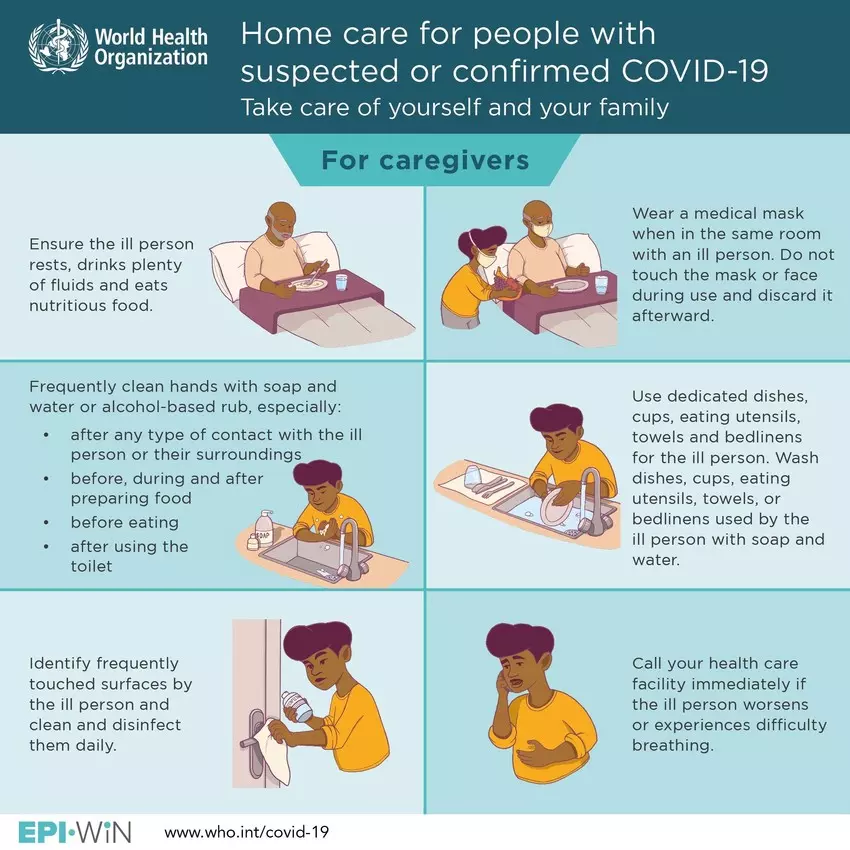COVID-19: What You Need to Know About The Coronavirus Pandemic on 7 April
- In this daily round-up, we'll bring you a selection of the latest news updates on the coronavirus pandemic, as well as tips and tools to help you stay informed and protected.
- Today's big stories include: how lockdowns can end safely and how to look after someone with coronavirus.
How COVID-19 is İmpacting The Globe
- There are more than 1.3 million confirmed cases of infection of the COVID-19 coronavirus worldwide as of 7 April, with more than 73,000 confirmed deaths, according to Johns Hopkins University. More than 285,000 people have reportedly recovered from the disease.
- UK Prime Minister Boris Johnson was moved to intensive care as his COVID-19 symptoms worsened.
- Confirmed deaths in the New York region have shown signs of levelling off.
2. How Lockdowns Can End Safely and Effectively: A WHO Official Weighs İn
At Monday's World Health Organization (WHO) briefing, Michael J. Ryan, Chief Executive Director of the WHO Health Emergencies Programme, explained that a strategic "calibrated, step-wise approach" will be the safest and most effective way to ease lockdown restrictions. Countries will need to examine statistics such as their hospital bed capacity, their doubling rate; the number of contacts generated per infected case; and the positivity rate.
Once those key questions are answered, countries must put elements in place for a transition. "Once you raise the lockdown, you have to have an alternative method to suppress the infection," said Ryan. "The way to do that is active case finding, testing, isolation of cases, tracking of contacts, quarantining of contacts."
3. Why İt's Not Possible to End The Lockdowns Just Yet: A Virologist Explains
Virologist Guido Vanham explained recently why lockdown restrictions won't end soon for many of those currently under stay-at-home orders. He said we need to be looking at both "active" cases and "severe or critical" cases to make any assessment about easing such limitations.
"Those are the people in the hospitals needing intensive care, and their number is still increasing significantly. As long as they are going up, hospitals are over capacity, and we shouldn't expect measures to be relaxed: it would mean risking many more deaths."
4. The Coronavirus Pandemic Could be Devastating For The World's Migrants
The pandemic is on track to exacerbate the vulnerabilities of some of the 272 million international migrants worldwide. Migrants’ socioeconomic status may negatively impact their ability to take precautionary measures against COVID-19 and to receive medical care if contaminated.
From China to South Africa, calls are being made for inclusive COVID-19 responses to ensure migrants are incorporated into public health strategies and planning around the world.
5. How To Look After Someone With Coronavirus
Caring for a COVID-19 patient at home has become more common as hospitals become overwhelmed with cases. According the to WHO, caregivers should avoid using shared spaces, linens or dishes wherever possible, while bathrooms and kitchens should be well ventilated. The WHO says both the ill person and the caregiver should wear medical masks.

Yorumlar
Yorum Gönder